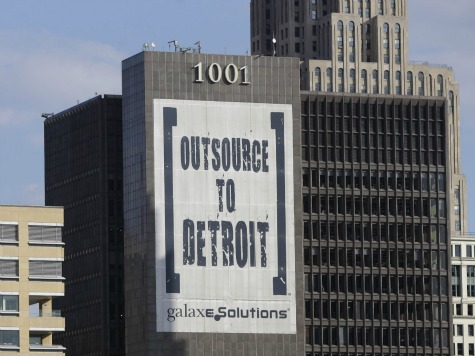
The bankruptcy of the City of Detroit is a historic event for many reasons. In financial terms, it is an event of default for municipal bonds measured in billions of dollars. Reuters reports the law firms specializing in municipal bankruptcy will be busy in the near term:
“With more than $18 billion at stake in Detroit’s restructuring, big law firms and other advisers are clamoring to represent the city’s many creditors – including some advisers not exactly known for municipal work… Detroit owes more than $8 billion in bond debt, and the insurers likely on the hook for those costs have already retained big-name law firms to take their cases.”
But it also represents the nadir of the life cycle of a 20th century city, the center of a metro area that has over 3 million residents but which itself has just 700k inhabitants. When Henry Ford’s ancestors came to the region in the 1800s, they travelled to Detroit not by land but by boat, via what is today known as the St Lawrence Seaway.
It is no accident that Canada’s three great cities, as well as Detroit and the other communities all grew up and thrived along the banks of the St Lawrence River. Immigrants from Europe flowed up one of the world’s great navigable estuaries. They traveled along the St Lawrence through Lake Ontario and eventually to the bottom of Lake Erie where Michigan’s great cities were located. When the Ford ancestors arrived by boat, wagons were needed to transport cargo and people into the interior. No accident then that Henry Ford and contemporaries like the Dodge Brothers worked in wagon factories in Detroit in the last decade of the 1800s.
The geographic and historical fact of Detroit’s location at the bottom of Lake Erie explains, in a simplistic sense, the historic antecedents of the car industry in that region. But it also explains why Detroit is no longer so relevant to the global auto sector of 2013. In today’s economy, locating auto production and assembly facilities near deep ocean ports on either coast is probably more attractive than interior seaports like Detroit. Indeed, all of the suppliers and ancillary services which make the auto industry work have long since adjusted to this reality.
The fate of Detroit and the Ford family have been intertwined for decades. The great Detroit banks became rich on the auto industry. Henry Ford’s refusal to support the Detroit banks provoked the banking crisis of 1933, creating the circumstances for FDR’s dramatic inauguration in March of that year. Banks from Detroit to New York were closed when FDR said there is nothing to fear “but fear itself,” but he was a good enough politician not to waste a good crisis.
The City of Detroit came roaring back after WWII, as the growth in American productive capacity helped many industrial firms located in the Midwest prosper. Ford is one of the few industrial companies that did not abandon Detroit even as its fortunes have changed along with the industry which built it. But the loss of good paying jobs has certainly forced Detroit to confront change.
“Blue-collar workers poured into the cavernous auto plants of Detroit for generations, confident that a sturdy back and strong work ethic would bring them a house, a car and economic security,” writes Sharon Cohen of AP. “It was a place where the American dream came true.”
David Cole, chairman emeritus of the Center for Automotive Research in Ann Arbor, Michigan, and son of a General Motors Co. (GM) president noted that the automakers are thriving even as Detroit is forced into default. “The auto industry was forced to change, driven by industry pressure, and it evolved,” Cole said. “Detroit did not. It’s sad to see. We just took it all for granted,” he told the Detroit Business Mirror.
Henny Sender of the Financial Times recalls the progression of change that led to this momentous day: “The lights have been dimming in Detroit for decades. Riots in the sixties triggered a wave of migration to the surrounding suburbs. A decade later, a surge in Japanese car imports shook the city’s industrial base,” she writes. But now the auto sector in the US is in better shape than in decades, even if the adjustment process in Detroit is only now beginning in a serious way.
Look at the bankruptcy filing by Detroit as the first step to rationalize a great American city and last act of the transformation of the US auto industry. Once upon a time, locating the US auto industry in Michigan made a lot of sense. But today, the global nature of the auto industry probably means that factories are more likely to be located in the Southeast or Mexico to serve the markets of the US and Canada. The bankruptcy of Detroit is a painful but necessary process in the life cycle of one of America’s great cities.

COMMENTS
Please let us know if you're having issues with commenting.